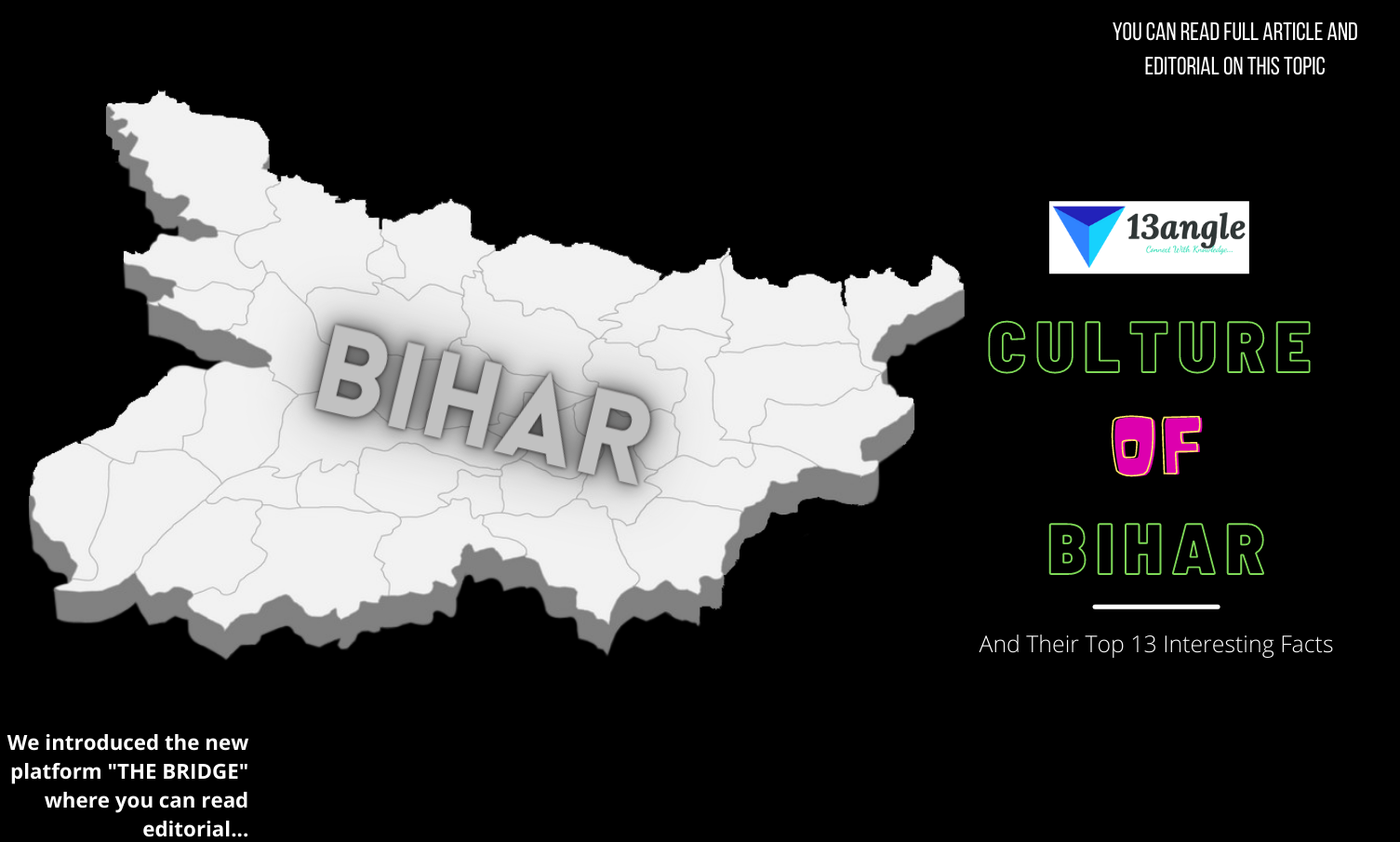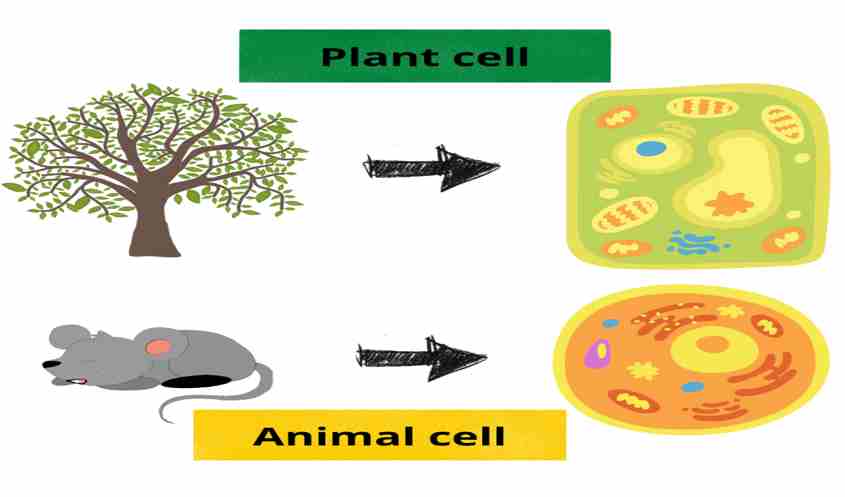
Introduction
First of all, we will understand what is meant by the cell, what its function is, and who discovered it.
- The cell is the fundamental unit of life.
- The word ‘cell’ is derived from the Latin word “cella”, which means “small room”.
- All living species on Earth are composed of cells.
- Robert Hooke was the first Biologist who discovered cells.
- Later Anton Van Leeuwenhoek observed cells under another compound microscope with higher magnification.
- Robert Brown, a Scottish botanist, provided the very first insights into the cell structure. He was able to describe the nucleus present in the cells of orchids.
- All cells arise from pre-existing cells.
- Energy flows within the cells.
- The chemical composition of all the cells is the same.
- Cells facilitate cell division.
- All cells are not alike; in fact, they can be wildly different.
- Biologists estimate that there may be up to 100 million distinct species of living things on our planet.
- Based on the presence of a nuclear membrane, the cells are classified into two types i.e., Eukaryotic and prokaryotic.
- And the cells may also be classified based on the number of cells an organism is made of i.e., unicellular, multicellular, and acellular.
Cell Structure
The cell structure comprises individual components with specific functions essential in carrying out life’s processes.
These components include- the cell wall, cell membrane, cytoplasm, nucleus, and cell organelles.
Structure of Plant cell, animal cell, and bacterial cell: –
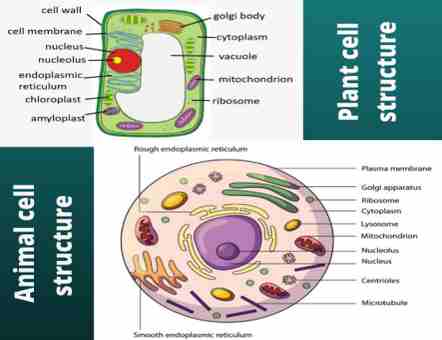

Cell Organelles
Cells are composed of various cell organelles that perform certain specific functions to carry out life’s processes. The different cell organelles, along with their principal functions, are as follows:
Cell Organelles and their Functions;
1. Nucleus:-
- The nucleus directs the cell’s activities and stores the DNA.
- It is the membrane-bound organelle that contains a cell’s DNA.
- When a cell is not dividing, the DNA is in the form of a thread-like material called chromatin inside the nucleus.
- When a cell is about to divide, the chromatin condenses to form chromosomes within the nucleus.
- Nuclear envelope- The nucleus is surrounded by a double membrane called the nuclear envelope
- Nucleolus- The nucleolus is a membrane-less structure whose function is RNA synthesis also; it is involved in controlling cellular activities and cellular reproduction.
- The nucleolus is the place where DNA is concentrated when it is in the process of making ribosomal RNA.
2. Nuclear membrane:-
- The nuclear membrane function is to protect the nucleus by forming a boundary between the nucleus, cytoplasm, and other cell organelles.
- It breaks during cell division and is reformed around the nuclei of each of the two daughter cells.
3. Cell membrane/ Plasma membrane:-
- The cell membrane is flexible and facilitates a unicellular organism in its movement.
- It is made up of two lipid bilayer membranes in which proteins are partially embedded which is termed a fluid mosaic model.
4. Cytoplasm:-
- The region of the cell that is within the plasma membrane and that includes the fluid, the cytoskeleton, and all of the organelles except the nucleus is called the cytoplasm.
- The part of the cytoplasm that includes molecules and small particles, such as ribosomes, but not membrane-bound organelles in the cytosol.
- About 20% of the cytosol is made up of protein.
5. Chromosomes:-
- Chromosomes play a crucial role in determining the sex of an individual. The chromosome number depends upon the species and varies accordingly, each human cells contain 23 pairs (i.e., 46 chromosomes) of chromosomes in the cell.
6. Endoplasmic reticulum (ER):-
- Endoplasmic Reticulum is a complex network of tubular membranes present in the cytoplasm of the eukaryotic cell.
- It is involved in the transportation of substances throughout the cell. It plays a primary role in the metabolism of carbohydrates, and the synthesis of lipids, steroids, and proteins inside the cell.
- It also consists of Rough ER and Smooth ER
- The rough endoplasmic reticulum has ribosomes attached within its structure, giving a “rough” appearance. And the smooth endoplasmic reticulum does not have these ribosomes, hence appearing “smooth.”
7. Golgi Body/ Golgi apparatus/ Golgi complex:-
- It is another packaging organelle like the endoplasmic reticulum (ER), Golgi bodies are called the cell’s post office as it is involved in the transportation of materials within the cell.
8. Ribosome/ Palade granules:-
- Ribosomes are either free or attached to the rough ER and play a role in protein synthesis.
- Ribosomes are made up of protein and RNA molecules.
- Ribosome assembly begins in the nucleolus and is completed in the cytoplasm.
- Ribosomes are composed of RNA and protein which convert genetic code into chains of amino acids.
9. Mitochondria:-
- The mitochondrion is called “the powerhouse of the cell.” because it produces adenosine triphosphate (ATP), the main energy molecule used by the cell.”
- The mitochondria harvest energy from organic compounds and transfer it to ATP.
- The size range of mitochondria is 0.75 and 3 μm2 in area.
10. Lysosomes:-
- Lysosomes protect the cell by engulfing the foreign particles entering the cell and help in cell renewal. Therefore, they are known as suicidal bags of the cell.
11. Cell wall:-
- It is present in plant cells; a rigid cell wall covers the cell membrane and provides support and protection to the cell.
12. Vacuoles:-
- Large vacuoles store food, water, enzymes, and other waste materials in the plant cell and provide support for the plant tissue.
13. Plastids:-
- It stores starch and pigments.
- Chloroplasts –uses light energy to make carbohydrates from carbon dioxide and water; thylakoids contain green pigment chlorophyll that absorbs light energy hence responsible for the photosynthesis process.
- Chromoplasts – contain colorful pigments.
- Amyloplasts – stores starch
Comparison Of Cell Organelles Between Plant Cell, Animal Cell, And Bacterial Cell
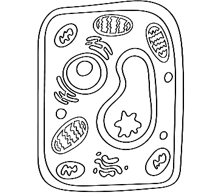 |
 |
 |
|
| Plant cell (Eukaryote) Size: 10 to 100 µm | Animal cell (Eukaryote) Size: 10 to 100 µm | Bacterial cell (Prokaryote) Size: 0.2 to 2 µm | |
| Cytoskeleton | Present | Present | Present |
| Nucleoid | Absent | Absent | Present |
| Nucleus | Present | Present | Absent |
| Mitochondria | Present | Present | Absent |
| Chloroplast | Present | Absent | Absent |
| Endoplasmic reticulum (ER) | Present | Present | Absent |
| Ribosomes | Present | Present | Present |
| Golgi | Present | Present | Absent |
| Peroxisome | Present | Present | Absent |
| Lysosome | Absent | Present | Absent |
| Vesicles and Vacuoles | Present | Present | Absent |
| Centrosome | Absent | Present | Absent |
| Cell wall | Present | Absent | Present |
| Cell membrane | Present | Present | Present |
| Flagella | Absent | Present | Present |
| Cilia | Absent | Present | Absent |
Cell Types
Plant cells | Animal cells | Bacterial cells |
Collenchyma Cells Sclerenchyma Cells Parenchyma Cells Xylem Cells Phloem Cells | Skin Cells Muscle Cells Blood Cells Nerve Cells Fat Cells | Spherical-shaped (cocci) Rod-shaped (bacilli) Spiral shaped (spirilla) Comma-shaped (vibrio) Corkscrew-shaped (spirochaetes) |
Cell Division
Asexual reproduction involves a single cell dividing to make 2 new, identical daughter cells, Mitosis & binary fission are examples of asexual reproduction.
Sexual reproduction involves two cells (egg & sperm) joining to make a new cell (zygote) that is NOT identical to the original cells, Meiosis is an example.
In Prokaryotes:-
Prokaryotes such as bacteria divide into 2 identical cells by the process of binary fission.
A single chromosome makes a copy of itself.
Cell wall forms between the chromosomes dividing the cell.
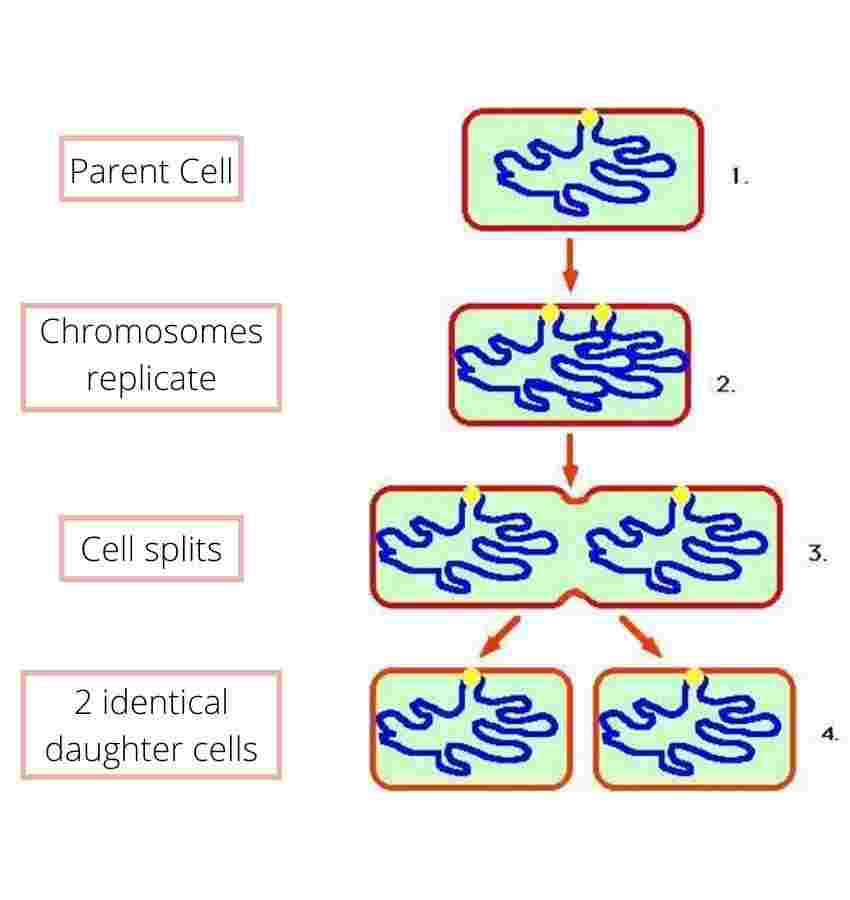
2. In Eukaryotes:-
Cell cycle:-
- Cells of organisms are governed by life cycles. Hence the life cycle of a cell is called the cell cycle. The cells spend most of their time in the interphase followed by the mitotic phase and cytokinesis.

The cell cycle contains the following stages;
1. Interphase:-
- Interphase is divided into three stages:
- First gap (G1), synthesis (S), and second gap (G2).
- G1 – Primary growth phase (time consumed is 6-12 hours)
- Cells mature by making more cytoplasm & organelles.
- The cell carries out its normal metabolic activities in this stage.
- S – Synthesis stage (time consumed is 6-8 hours)
- DNA is copied or replicated (Two identical copies of DNA can be obtained).
- G2 – Secondary growth phase (time consumed is 3-4 hours)
- This stage occurs after DNA has been copied.
- All cell structures needed for division are made (e.g., centrioles)
- Both organelles & proteins are synthesized in this stage.
(Collectively these 3 stages are called interphase)
2. M – Mitotic phase (time consumed is 1-2 hours):-
- Division of the nucleus happens in this stage, which is also called karyokinesis.
- This division only occurs in eukaryotes.
- Has four stages (Prophase, Metaphase, Anaphase, Telophase)
- Doesn’t occur in some cells such as brain cells.
3. C – Cytokinesis:-
- This means the division of the cytoplasm.
- Division of cells into two, identical halves called daughter cells.
- In-plant cells, a cell plate forms at the equator to divide the cell.
- In animal cells, a cleavage furrow forms to split cells.
Mitosis
It is an equational cell division.
Prophase, prometaphase, metaphase, anaphase, and telophase are the five stages of mitosis.
1. Prophase:-
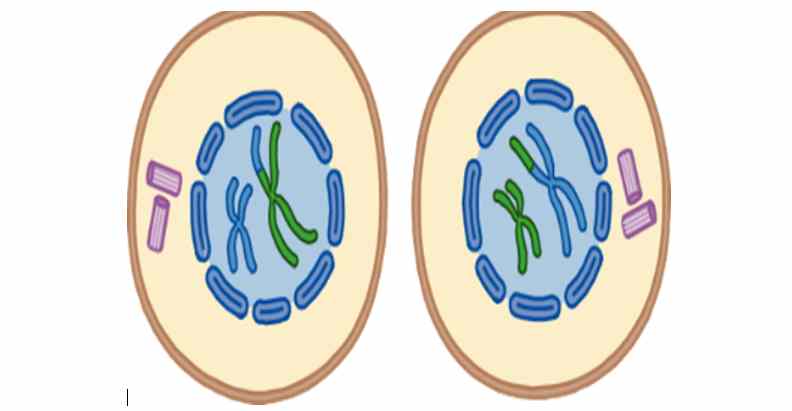
- During prophase, chromatin becomes more tightly coiled and condenses into visible chromosomes, the nucleolus vanishes, and the spindle apparatus begins to develop in the cytoplasm.
2. Prometaphase:-
The nuclear envelope breaks down in prometaphase, allowing the spindle apparatus to invade the nuclear region. Some of the spindle fibers bind to the kinetochore, located near each chromosome’s centromere.
The most visible structure of the mitotic apparatus is the spindle apparatus. the nuclear area of the cell has opposing poles, Like the North and South Poles. Spindle fibers cover the full nuclear region, reaching from pole to pole.
3. Metaphase:-
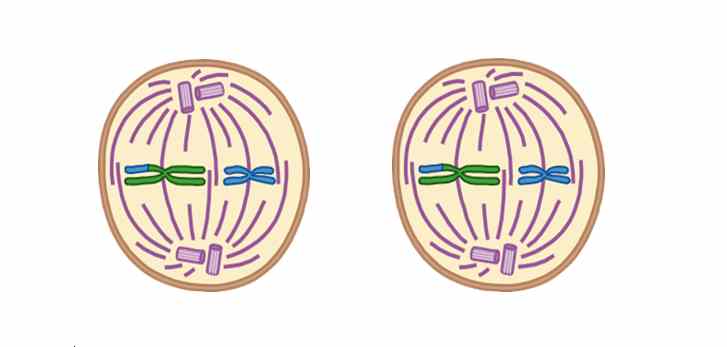
- The chromosomes of the cell align in an equatorial position during metaphase, with sister chromatids directed toward opposing poles.
4. Anaphase:-

- During anaphase, the sister chromatids are pulled apart to opposite poles of the cell by kinetochore fibers.
5. Telophase:-
- In telophase, the sister chromatids arrive at opposite poles, the Spindle fibers disassemble, nuclear envelope forms around each set of sister chromatids, the nucleolus reappears, cytokinesis occurs and the chromosomes reappear as chromatin And then followed by cytokinesis.
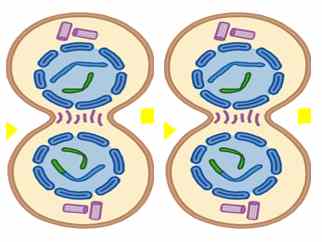

Meiosis
It is the fundamental basis of sexual reproduction
Two haploids (1n) gametes are brought together through fertilization to form a diploid (2n) zygote
- The resultant daughter cells contain half the number of chromosomes as the original cell.
- After this division, it produces gametes (eggs & sperm)
- Occurs in the testes in males (Spermatogenesis)
- Occurs in the ovaries in females (Oogenesis)
Meiosis is a more complex and tedious process than mitosis and is divided into two major stages: meiosis I and meiosis II.
- Division starts with 46 double-stranded chromosomes (2n)
- After 1 division (Meiosis I) – 23 double-stranded chromosomes (n)
- After 2nd division (Meiosis II) – 23 single-stranded chromosomes (n)
1. Meiosis I (reductional division)
consists of prophase I, metaphase I, anaphase I, and telophase I.
2. Meiosis II (equational division)
consists of prophase II, metaphase II, anaphase II, and telophase II. In some cells, an interphase II occurs between meiosis I and meiosis II, but no DNA replication occurs.
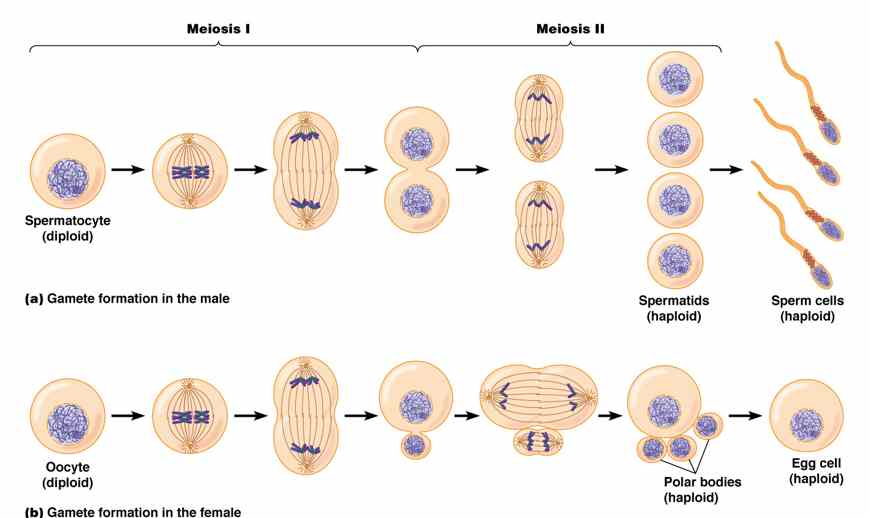
Meiosis I :-
1. Prophase I
- During prophase I, the chromosomes condense, the nuclear envelope falls apart, and the spindle apparatus begins to form.
- The homologous chromosomes come together to form tetrads.
- The arms of the sister chromatids of one homolog touch the arms of sister chromatids of the other homolog, the contact points being called chiasmata.
- Each chiasma represents a place where the arms have the same loci, so-called homologous regions. During this contact, the chromosomes undergo crossover, in which the chromosomes break at the chiasmata and exchange homologous pieces.
- This process results in recombination, which results in increased variability in the offspring and the appearance of character combinations not present in either parent.
2. Metaphase I
- Tetrads align on the metaphase plate during metaphase I, and one spindle fiber attaches to the kinetochore of each chromosome.
3. Anaphase I
- In anaphase I, the homologous chromosomes separate, each homolog from a tetrad moving toward opposite poles.
4. Telophase I
- Telophase I begins as the homologs reach opposite poles, and similar to telophase of mitosis, the spindle apparatus falls apart, and a nuclear envelope re-forms around each of the two haploid nuclei.
Meiosis II :-
Meiosis II is essentially the same as mitosis, dividing the two haploid nuclei formed in meiosis I.
Prophase II, metaphase II, anaphase II, and telophase II are similar to mitosis.
Meiosis II begins with two haploid cells and ends with four haploid daughter cells.
Top 13 Interesting Facts About Cell
These cells can be observed in a wide range of biological processes under a light microscope is easier due to advances in microscopic techniques.
These cells we use in Microbiology, Cell Biology, Biotechnology, Agricultural biotechnology, Genetic engineering, pharmacology, etc. While observing with tissues or on tissue fragments or free cells in smear tests, medical diagnosis.
The similarities between plant, animal, and bacterial cells made the exploration of the development of life on Earth possible. Now, scientists are using clues from the last 3.5 billion years to create better knowledge about the history of life on the planet.
The cell is the fundamental unit of life. All living species on Earth are composed of cells. All cells arise from pre-existing cells. Energy flows within the cells. The chemical composition of cells, DNA, proteins, and small molecules all work together to provide life.
Bacteria lack a membrane-bound nucleus; hence their genetic material is normally a single circular bacterial chromosome of DNA found in the cytoplasm in an irregularly shaped structure known as the nucleoid. The chromosome, together with its accompanying proteins and RNA, is housed in the nucleoid.
Eukaryotic cells are bigger and more complex than prokaryotic cells.
The plant and animal cells are large when compared to the bacterial cell. The bacterial cell is very small almost about one-tenth the size of a eukaryotic cell.
Animal cells differ in shape and are generally irregular due to the lack of a cell wall. Hence the plant cells contain cell walls.
Plant cells are eukaryotic cells that differ from animal cells in numerous key areas. The nucleus and other membrane-bound cellular organelles are found in plant cells, just as they are in animal cells.
Eukaryotic cells with a membrane-bound nucleus are known as animal cells. In several essential ways, they vary from plant cells. A cell wall, plastids, and other cellular organelles are absent from these cells.
Bacteria are unicellular, living organisms that are classified as prokaryotic cells because they lack a few membrane-bound organelles and the nucleus, which is one of the most essential cell organelles.
Bacteria were the first species to emerge on Earth, according to evolution theory, and so this group of living beings is regarded as one of the oldest forms of life on the planet.
Plasmodesmata arise during plant development during phases of cell division. They arise when parts of the parent cell’s smooth endoplasmic reticulum get stuck in the newly created plant cell wall.






